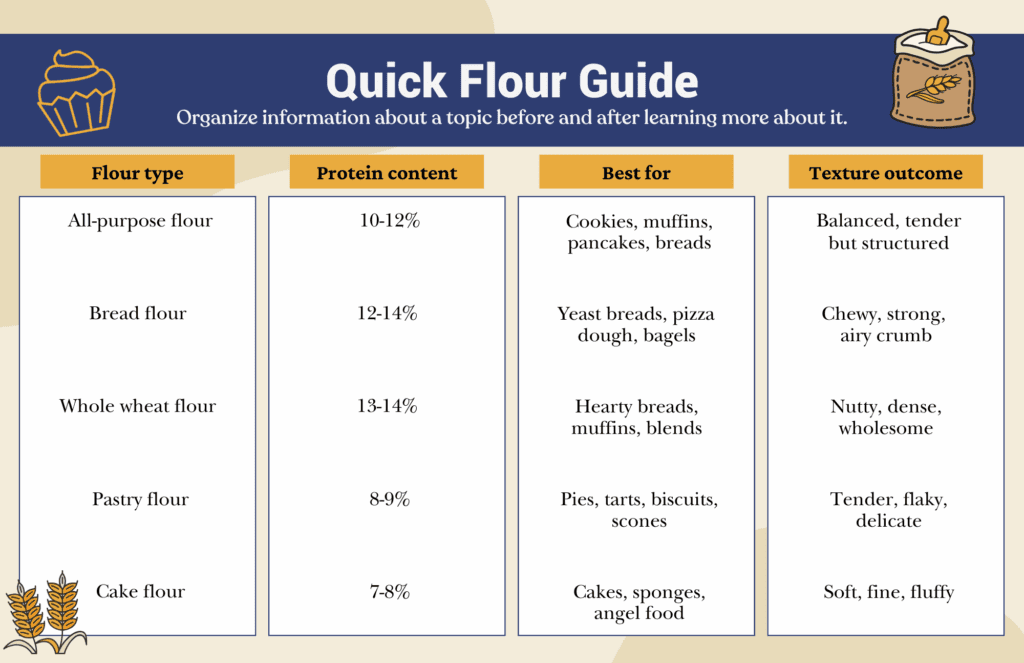Walk down the baking aisle at the grocery store and you’ll see a variety of flours, each promising different results. All-purpose, bread, whole wheat, pastry — what’s the difference, and how do you know which one to use? The type of flour you choose has a big impact on the texture, flavor and structure of your baked goods. Here’s a guide to understanding the most common wheat flours and how to pick the right one for your recipe.
All-purpose flour
As the name suggests, this is the most versatile option. It has a medium protein content, usually around 10 to 12%, which means it provides enough gluten for structure, but still keeps baked goods tender. All-purpose flour works well for cookies, muffins, pancakes and some breads.
Bread flour
With a higher protein content, typically 12 to 14%, bread flour produces more gluten. That extra strength creates the chewiness and structure needed in yeast breads, pizza dough and bagels. If you want tall, airy loaves with a strong crumb, bread flour is your go-to.
Whole wheat flour
Whole wheat flour uses the entire wheat kernel — bran, germ and endosperm. This makes it higher in fiber, vitamins and minerals, while giving baked goods a hearty, nutty flavor. Because bran particles can cut through gluten strands, breads made with 100% whole wheat flour may be denser. Many bakers blend whole wheat with all-purpose or bread flour to balance nutrition and texture.
Pastry flour
Pastry flour has a lower protein content, around 8 to 9%, which makes it ideal for tender baked goods. Use it for pies, tarts, scones and biscuits where a delicate crumb is key. It’s the secret to that flaky, melt-in-your-mouth texture.
Cake flour
With the lowest protein content, usually 7 to 8%, cake flour produces very soft and tender results. It absorbs more liquid and sugar than other flours, helping cakes rise high with a fine, even crumb. If you’re baking a chiffon, sponge or angel food cake, this is the flour to choose.
How to choose the right flour
Think about the end result you want. Do you need strong structure and chew? Reach for bread flour. Are you aiming for a light, fluffy cake? Choose cake flour. For everyday use, all-purpose flour strikes a balance that works for most recipes. And if you’re looking to add whole grains and extra nutrition, whole wheat flour is a smart addition.
The takeaway
Flour is more than just a base ingredient — it’s the foundation of your baked good’s texture and flavor. By understanding the differences in wheat flours, you can choose the right one to match your recipe and get the best results every time.

